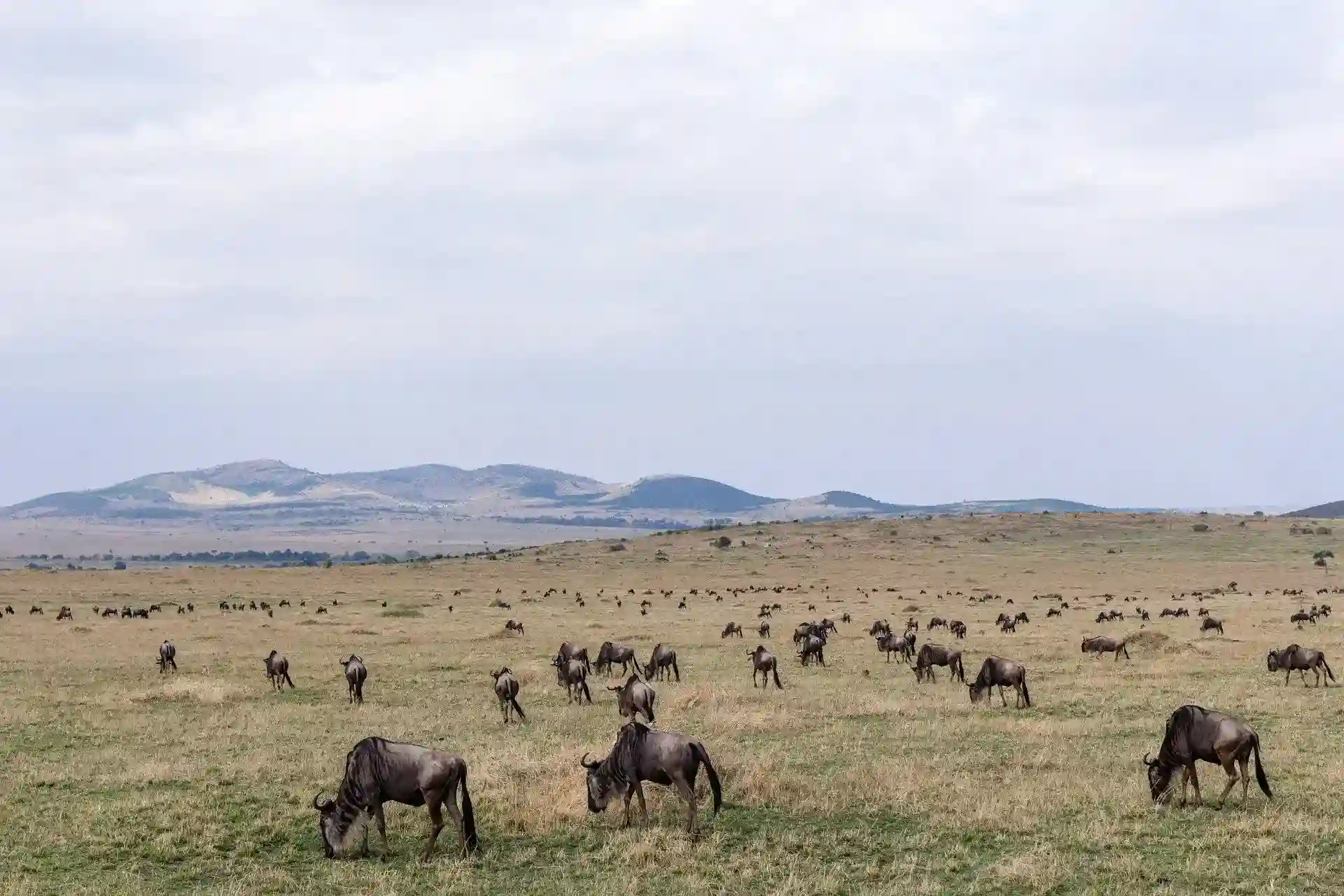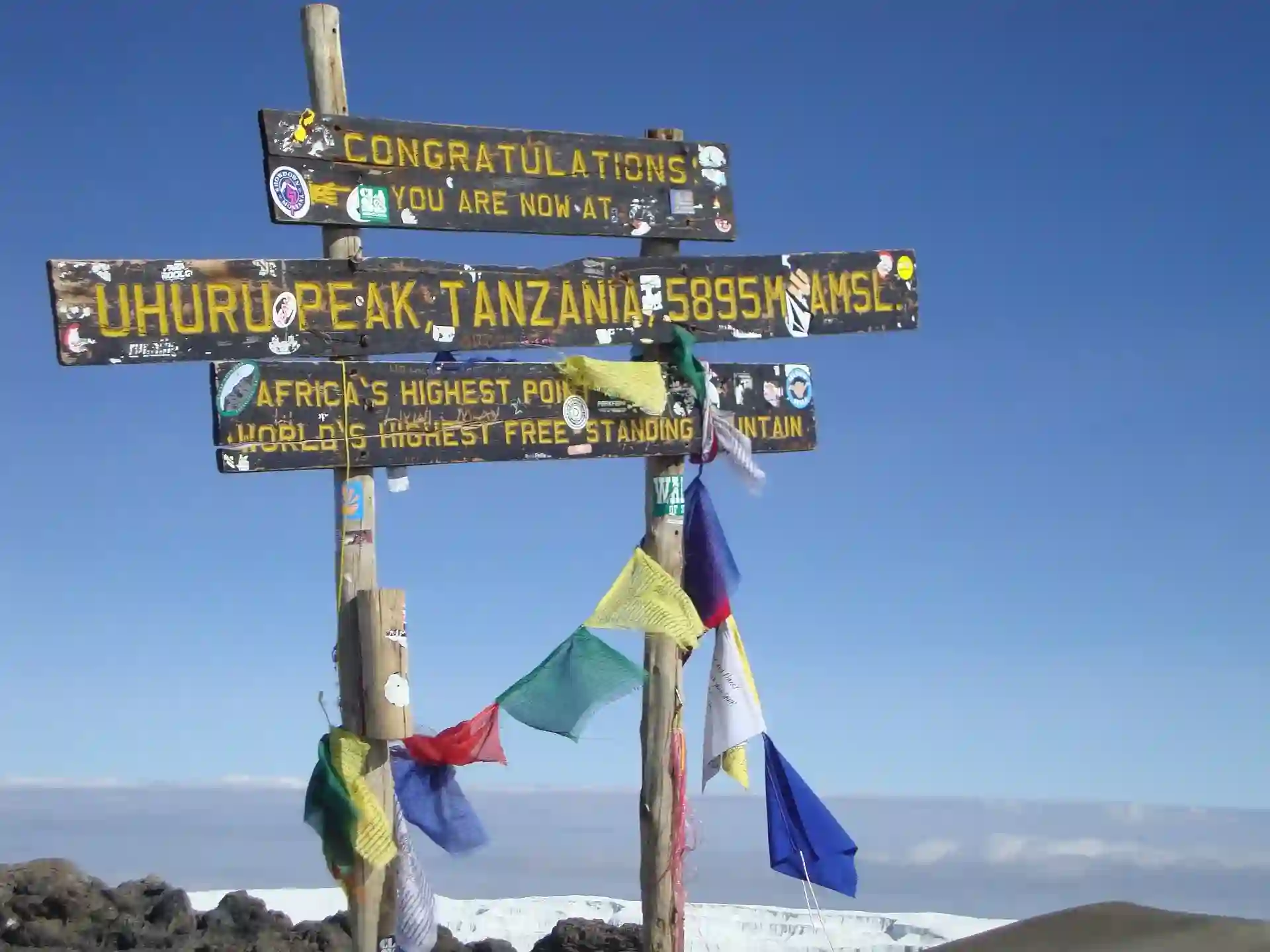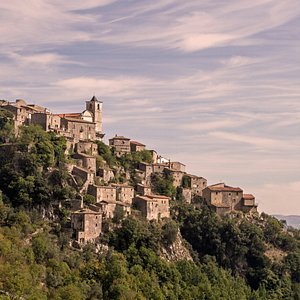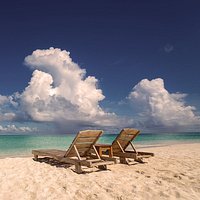January
The weather almost everywhere is hot, especially along the coast. It’s also dry in most areas, including on Kilimanjaro, and this dry, warm season from December into February can be an ideal time to scale the mountain.
February
The weather remains hot, but in parts of the country, the rains are falling, which means green landscapes, flowers and lots of birds.
Sauti za Busara
This three-day music and dance festival centered on all things Swahili, both traditional and modern; dates and location vary. It is conducted in February every year in Zanzibar island.
Wildebeest Calving Season
In one of nature’s greatest spectacles, over 8000 wildebeest calves are born each day in the southern Serengeti, although about 40% of these will die before they are four months old. See our custom itinerary that is focused on the river crossing event.
Orchids, Kitulo National Park
The blooms of orchids (over 40 species have been identified) as well as irises, geraniums and many other wildflowers carpet Kitulo Plateau in Tanzania’s Southern Highlands. It’s the rainy, muddy season here, but hardy, well-equipped hikers will be rewarded.
Kilimanjaro Marathon
This marathon (www.kilimanjaromarathon.com) is something to do around Kilimanjaro’s foothills, in case climbing to the mountain’s top isn’t enough; it’s held in February or March, starting and finishing in Moshi, with a half-marathon and a 5km fun run also available.
March
The long rains are in full swing now, although it seldom rains all day or every day. Some hotels close. Those that don’t often have low-season discounts and you’ll have many areas to yourself.
April
The rains begin to taper off in some areas, although much of the country remains wet. Green landscapes, wildflowers and birds, plus continued low-season prices make this a delightful time to travel, if you can avoid the mud.
Wildebeest Migration
The wildebeest – until now widely scattered over the southern Serengeti and the western reaches of Ngorongoro Conservation Area – begin to form thousands-strong herds that start migrating north and west in search of food.
June
With the ending of the rains, the air is clear and landscapes are slowly beginning to dry out. Temperatures are also considerably cooler.
Serengeti Wildebeest Migration
As the southern Serengeti dries out, vast wildebeest herds continue migrating northwestwards in search of food, crossing the Grumeti River en-route. The timing of the crossing (which lasts about a week) varies from year to year, anywhere from May to July.
See our custom 7 days migration safari focused on river crossing event.
July
Cool, dry July marks the start of peak travel season, with higher prices (and crowds) for safaris and lodges. It’s an optimal wildlife-watching month, with sparse vegetation and animals congregating at dwindling water sources.
Festival of the Dhow Countries
This two-week extravaganza of dance, music, film and literature from Tanzania and other Indian Ocean countries has the Zanzibar International Film Festival (www.ziff.or.tz) as its centerpiece. It’s held in early July at various locations in the Zanzibar Archipelago.
Dry Season Wildlife Watching
As rivers and streams dry out, animals congregate around remaining water sources, and it’s common to see large herds of elephants and more. Katavi and Tarangire parks are particularly notable for their dry season wildlife watching in July and August.
Mwaka Kogwa
This sometimes raucous four-day festival in late July marks Nairuzim (the Shirazi New Year). Festivities are best in Makunduchi on Zanzibar.
August
Dry weather continues, as does the Serengeti wildebeest migration.
Wildlife Watching
Wildlife watching almost everywhere is at its prime.
Mara River Crossing
By August – often earlier – the wildebeest make their spectacular crossing of the Mara River into Kenya’s Masai Mara, before roaming south again in anticipation of the rains.
October
The weather is mostly dry throughout the country, with a profusion of lavender jacaranda blossoms in higher-lying towns and some rain. It’s still a fine time for wildlife watching, without the crowds of July and August.
Makuya Cultural Arts Festival
This lively two-day festival (http://makuyafestival.blogspot.com) showcases traditional dances and drumming of southern Tanzania’s Makonde, Makua and Yao tribes. Dates vary, but it’s usually held in September or October.
Bagamoyo Arts Festival
This is a somewhat disorganized but fascinating week of traditional music, dance, drama, acrobatics, poetry reading and more (www.bagamoyofestival.weebly.com), sponsored by the Bagamoyo College of Arts and featuring local and regional ensembles. Dates vary.
Ruaha Marathon
This marathon in and around Iringa is a good way to test your fitness and to see the Southern Highlands. There are also races for runners with disabilities. Dates vary.
November
Increasing temperatures are mitigated by the arrival of mango season and by the short rains that are now falling in many areas. It’s still a pleasant travel time, before the holiday travel high season.
December
December’s holidays and hot but dry weather bring many visitors. It’s an ideal time to climb Mt Kilimanjaro and to see the wildebeest in the southern Serengeti.
Swahili Fashion Week
The largest showcase for East African design (www.swahilifashionweek.com), this event is held annually in December; dates vary.
Contact us for amazing adventures — our travel expert will help you design your custom-made itinerary.... PLAN MY TRIP. And guess what, it is totally free.
















